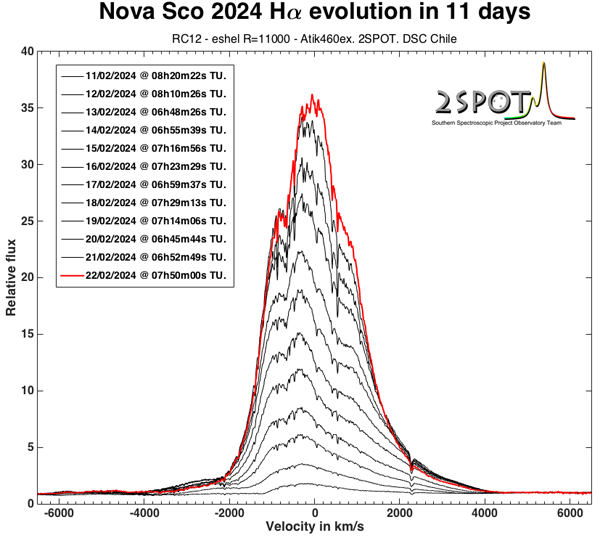Page 1 of 2
PNV J17261813-3809354
Posted: Sun Feb 11, 2024 11:59 am
by 2SPOT
From the discovery by Andrew Pearce that was the subject of this CBAT:
http://www.cbat.eps.harvard.edu/unconf/ ... 09354.html
We made its spectrum last night with our eshel setup (R=11000). Just 3 exposures of 1200s before sunrise. The target was at magnItude 6.4 at the time of the exposures.
The spectrum was produced automatically this morning
Here's the automatic pointing of the target on the spectrograph fiber
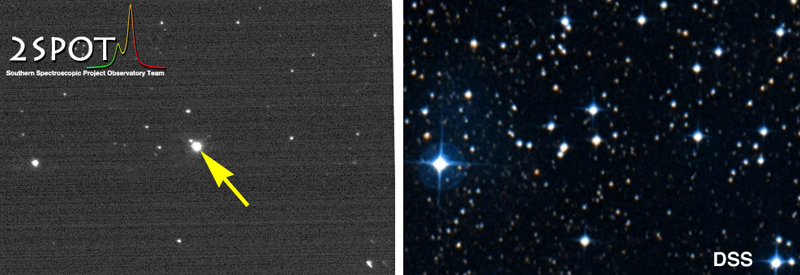
and the full graph automatically processed
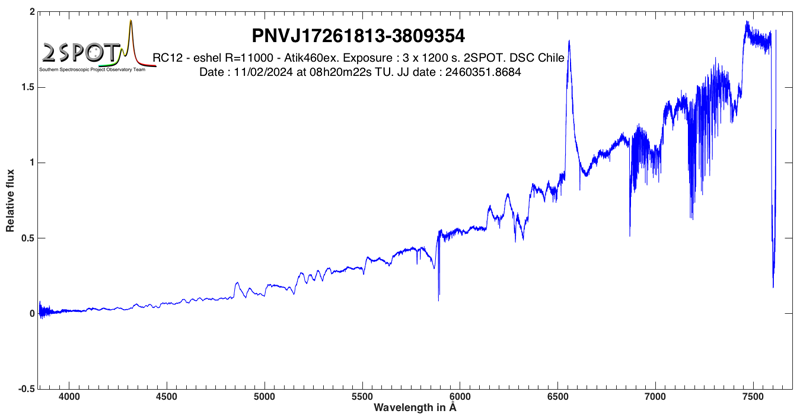
as well as the graph of Balmers lines up to H gamma (H Delta being very weak)
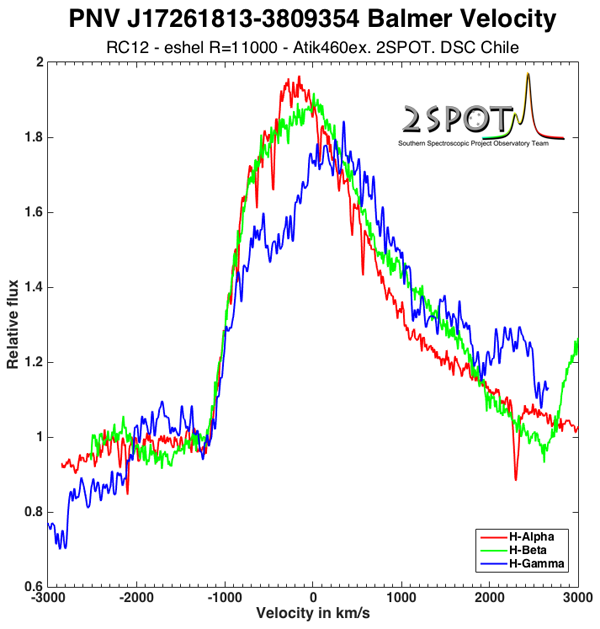
Re: PNV J17261813-3809354
Posted: Sun Feb 11, 2024 4:40 pm
by Robin Leadbeater
An interesting very red spectrum. Total galactic IS extinction is 7.8 in V in that direction so probably very reddened. Image how bright it might have been without extinction !
Robin
Re: PNV J17261813-3809354
Posted: Mon Feb 12, 2024 1:18 pm
by 2SPOT
A second spectrum taken this morning and the evolution in one day.
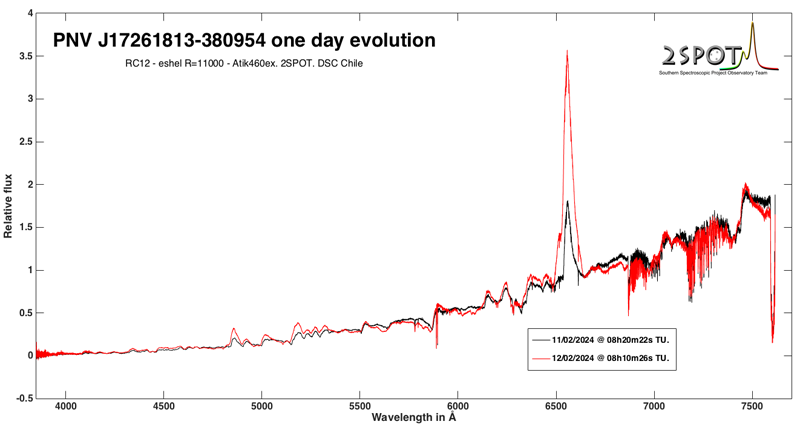
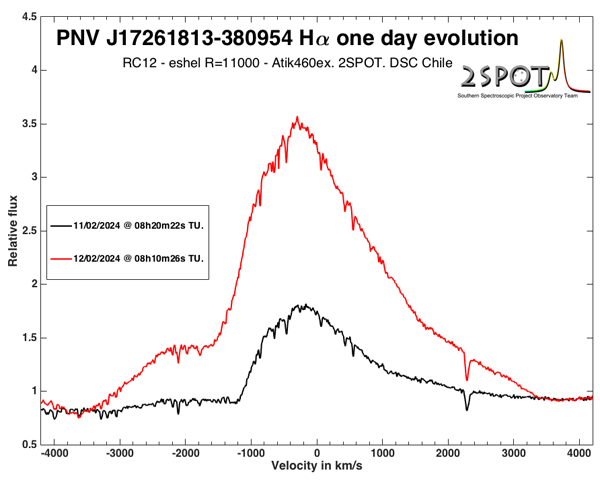
Re: PNV J17261813-3809354
Posted: Mon Feb 12, 2024 3:26 pm
by 2SPOT
Re: PNV J17261813-3809354
Posted: Tue Feb 13, 2024 8:17 am
by Francois Teyssier
Excellent!
Page open in the database:
https://aras-database.github.io/databas ... o2024.html
Bonne continuation!
François
Re: PNV J17261813-3809354
Posted: Tue Feb 13, 2024 2:15 pm
by 2SPOT
Another spectrum taken this morning and the evolution since 2 days
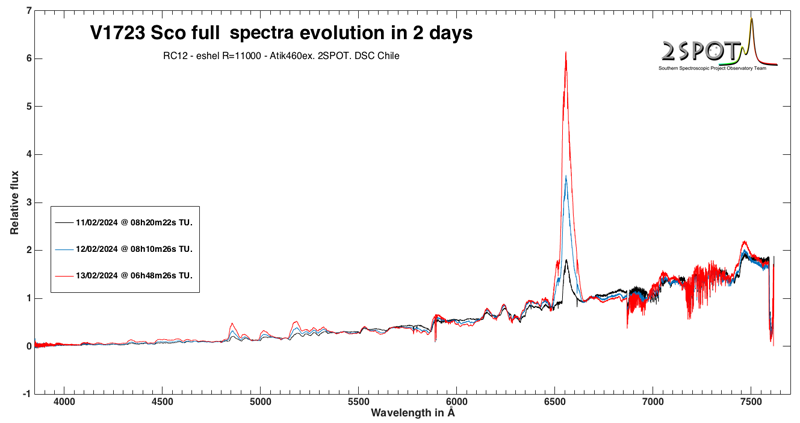
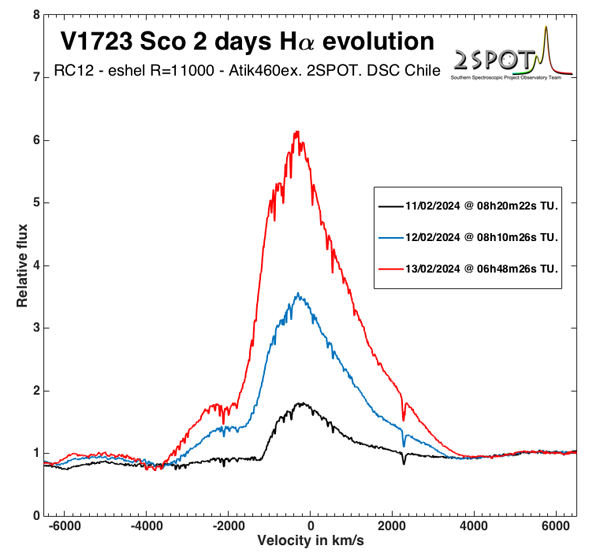
Re: PNV J17261813-3809354
Posted: Tue Feb 13, 2024 6:52 pm
by 2SPOT
Re: PNV J17261813-3809354
Posted: Fri Feb 16, 2024 3:57 pm
by 2SPOT
Our observations continue at the rate of one spectrum per day.
Here is the evolution over the first 5 days of this novae
Evolution of the whole spectrum
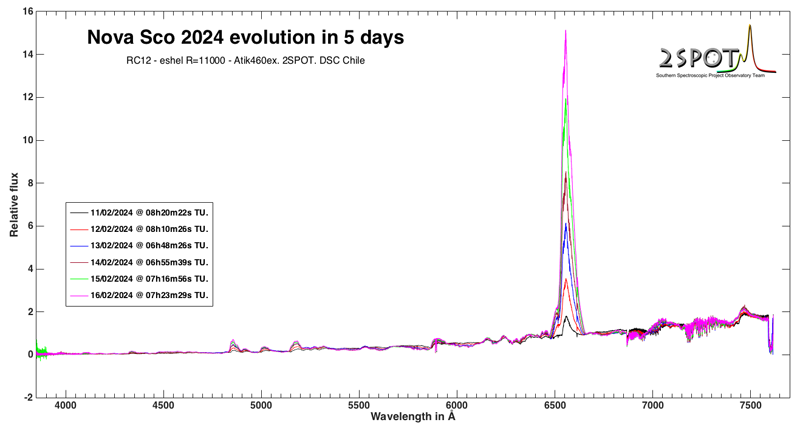
And the H alpha évolution

Re: PNV J17261813-3809354
Posted: Mon Feb 19, 2024 2:08 pm
by 2SPOT
Our 9th spectrum of this nova, i.e. one spectrum per night without interruption
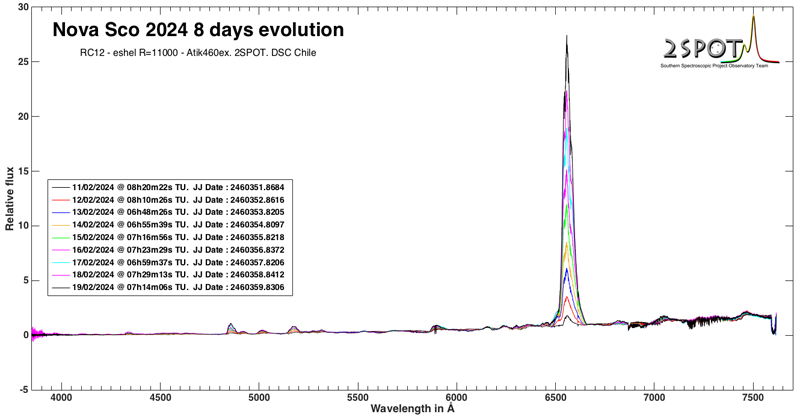
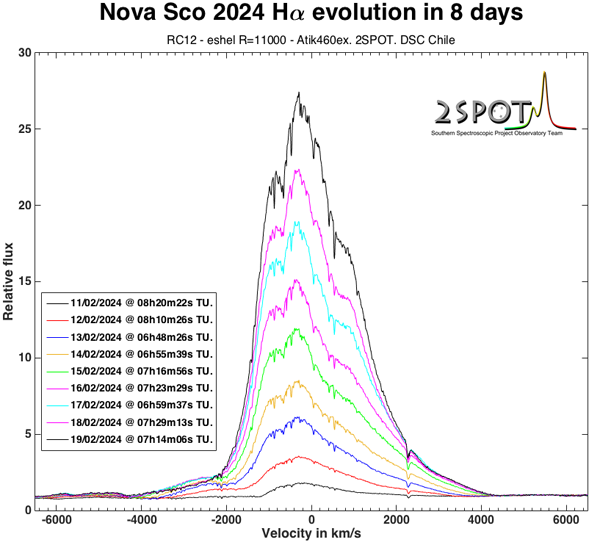
Re: PNV J17261813-3809354
Posted: Thu Feb 22, 2024 5:09 pm
by 2SPOT
Observations of this nova continue from Chile, with 1 spectrum per day for the last 12 days, always in automatic observation and including the spectra process, so we don't have to do anything manually.
Here are our 12 spectra and their evolutions

and H alpha line evolution
